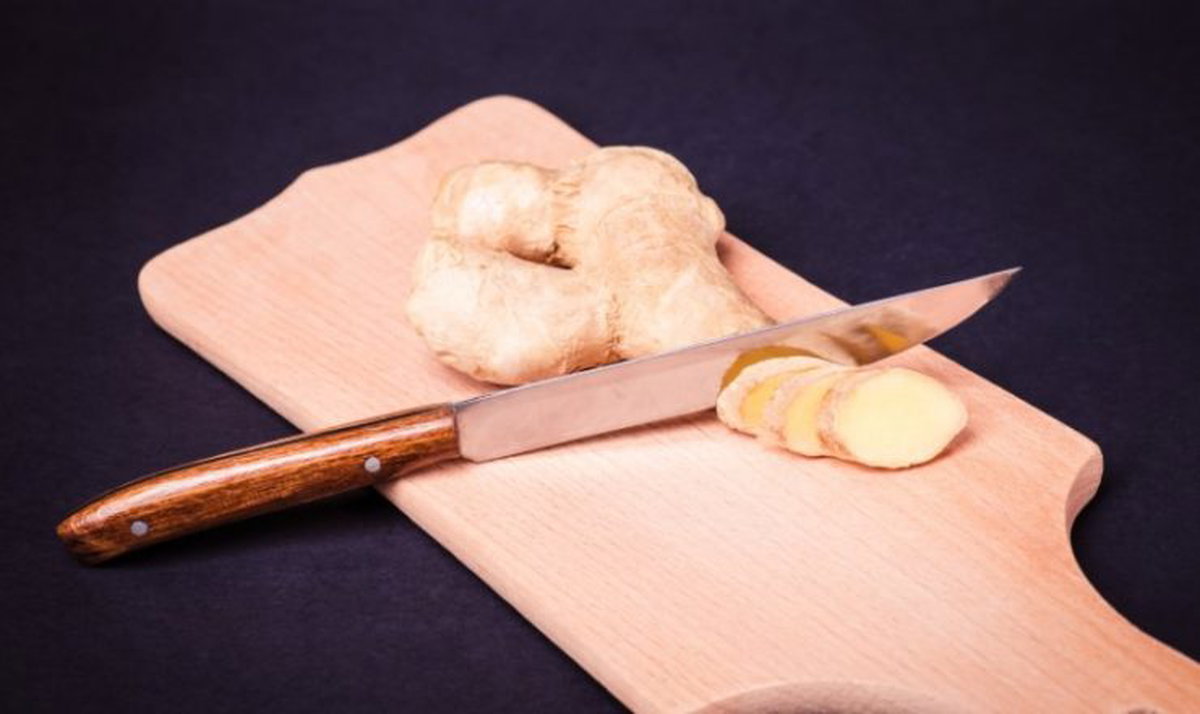After you clean and peel your ginger, it’s time to cut it up for use in your recipe. But what’s the best way to cut this pungent aromatic rhizome?
I’ve worked with ginger in both cocktail bars and Japanese restaurants and picked up a few tricks to make your prep time faster and easier. Today, I’ll cover how to mince ginger — as well as a few other cuts and preparation methods worth considering.
In This Article
Understanding Ginger
Ginger occupies a unique space in the chef’s pantry. It grows like a root vegetable, but it has the pungency and aromatic qualities of a spice. On top of that, it has a fibrous texture that’s more similar to a mango — making it a bit tricky to deal with.
So before you get into mincing, slicing, dicing, or grinding your ginger, we need to clear something up:
You need to buy fresh ginger.
And what is fresh ginger? You’ll recognize it by what it’s not: It shouldn’t look shriveled or dry. The more color it has, the better. And to give it a final test, scratch it with your fingernail; it should smell delicious and fragrant.
Now on to the cuts!
Types of Cuts for Ginger
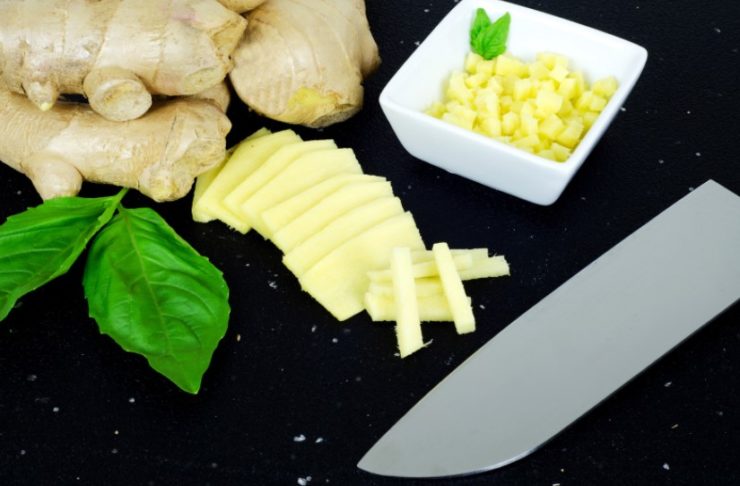
Mincing is the most common method for cutting ginger and garlic, two staples of Asian cooking. But there are four different ways you might consider cutting your peeled ginger:
| Chop your ginger into rough chunks. This is a quick and easy way to prepare your ginger for boiled tea, where the long cooking time will extract all of its flavors. |
| Slice your ginger into thin rounds. Steep these in sugar and vinegar, and you’ll have delicious pickled ginger as an accompaniment to sushi or rice. |
| Julienne your ginger into thin strips if you’d like a spicy topping for a mixed greens salad. |
| Mince your ginger into fine pieces if you plan on adding it to a stir fry or using it as a subtle spicing for any dish. |
For any of these ways to cut ginger, you’ll need a sharp knife. Are your kitchen knives up to the task? If not, check out my guide on how to sharpen kitchen knives for at-home use.
Other Methods for Preparing Ginger
Three methods can make an even finer preparation of ginger than mincing:
1. Grating your ginger on a microplane, cheese grater, or traditional Japanese ceramic grater. This is my favorite alternative to mincing, as it’s quick and convenient.
2. Grinding your ginger in a mortar and pestle (this takes a lot of work!).
3. Food processing your ginger in a blender or food processor. Unless you’re using a large portion of ginger, this is more trouble than it’s worth.
Just keep in mind that the finer your preparation of ginger, the quicker it will cook. If you’re frying in oil, using these preparations might lead to burning your ginger if you’re not careful.
How to Mince Ginger: Step By Step Guide
If you’d like to cut one ginger root into multiple shapes for different recipes, you’re in luck! Because the cuts mentioned above form a natural progression.
Here’s the full process for mincing ginger:
- Clean and peel your ginger. This gets rid of the dirty-flavored skin and leaves a clean, spicy, aromatic flavor instead.
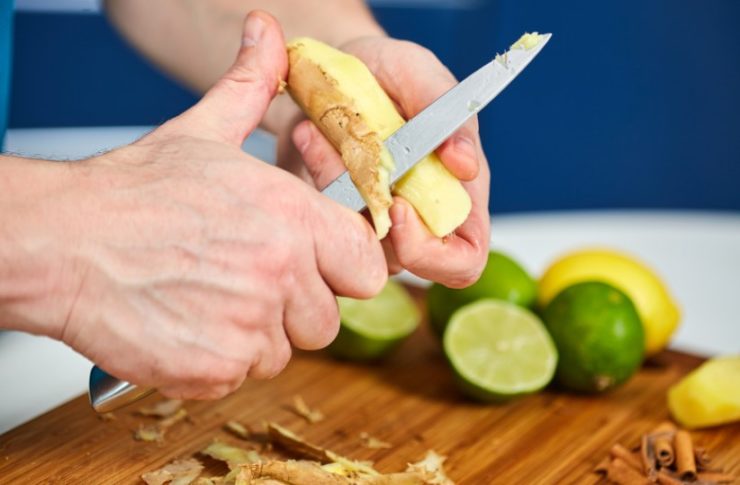
2. Break off each individual “arm” of ginger and set them on your cutting board.
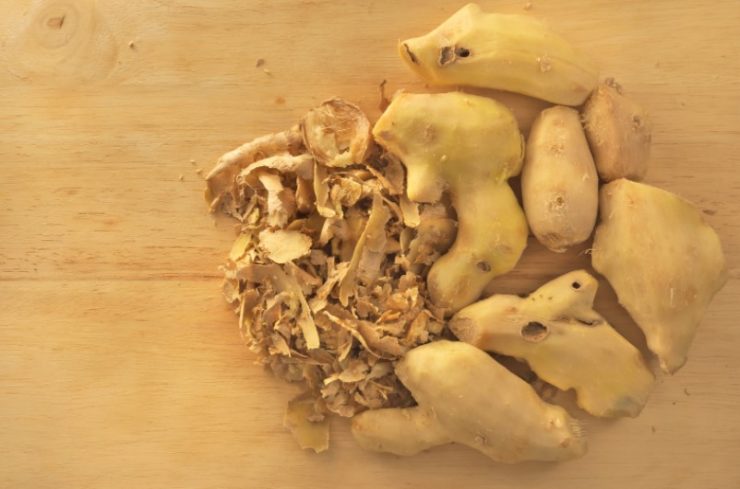
3. Using a sharp kitchen knife, cut each ginger arm into thin coins and set them aside.
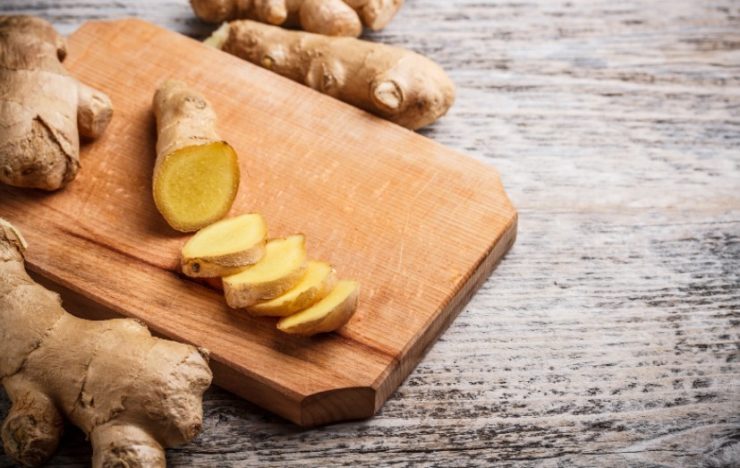
4. Julienne these coins into thin strips.
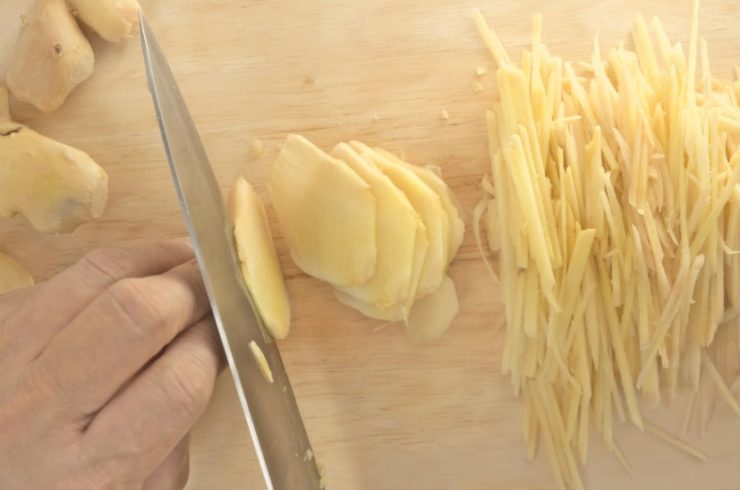
5. Turn those strips 90 degrees, and cut them into tiny cubes.

6. Congratulations! You’ve minced ginger.
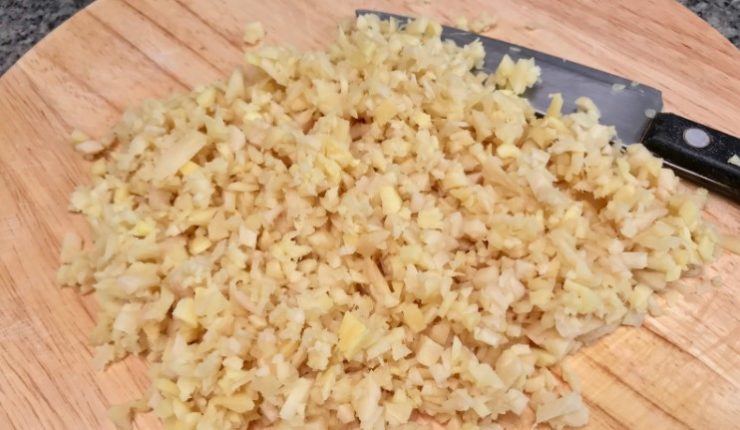
Final Tips
If you start with fresh ginger and store it in the fridge, it can last for months. Whenever you cut a piece off of it to peel and mince, cover the exposed section to keep it from drying out.
As long as your knives are razor-sharp, mincing ginger is a skill that’s within your reach. It takes practice and good knives, but the results of adding ginger’s uniquely spicy taste to your recipes are well worth the effort!
